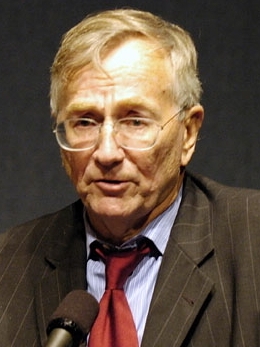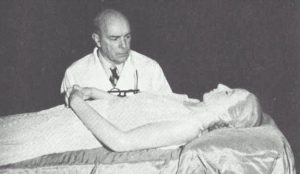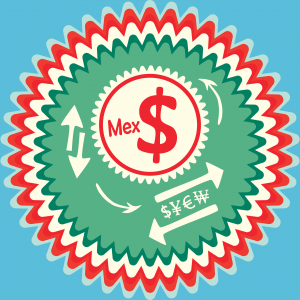What was originally described to the American people as a major victory during the Vietnam War only turned out to be one of the most heinous war crimes in the history of the United States. On the morning of March 16, 1968, between 347 and 504 Vietnamese civilians were raped, tortured, and murdered by U.S. soldiers of Charlie Company, 23rd Infantry (Americal) Division. My Lai was a cluster of hamlets of Son My village, nicknamed “Pinkville” by the division’s soldiers because of the concentration of Communist sympathizers and Viet Cong (VC) activity in the area.1 The murder that day of unarmed civilians went on for hours as members of the Task Force Barker burned every hamlet in sight. The numbers of civilians killed would’ve been a higher number if it weren’t for helicopter pilot Hugh Thompson Jr.2 The truths about what happened at My Lai were kept secret by the military, and would have remained secret, were it not for the freelance reporter Seymour Hersh, who exposed the horrible truths of what occurred on that day of the massacre, as well as the equally infamous cover-up.

Task Force Barker was a battalion-sized strike force in the 11th Infantry Brigade that stormed the region of My Lai performing their search-and-destroy operation, and later labeled the outcome as just another statistical victory for the military. Nearly four months after the atrocity of My Lai, stories and accounts were being leaked out.3 Different accounts of what took place during the hours of the My Lai Massacre show that groups of civilians were being lined up and mowed down by machine guns led by Lieutenant William Calley Jr. Children were used as target practice, according to an account from an ex-GI that stated “a tiny infant, barely of crawling age became the object of a marksmanship contest.”4 At the same time, women were raped and older men were grouped up around ditches to be murdered. Lieutenant Hugh Thompson Jr. was the pilot of the Hiller OH-23 Raven helicopter in Task Force Barker providing a sweep of the area until realizing that what was taking place below him wasn’t a war but a massacre. Hugh Thompson landed his helicopter between a group of soldiers and civilians and told his gunmen that if another soldier killed anyone else, his men were to fire on those soldiers. Toward the end of the massacre, at 3:55 p.m., Task Force Barker’s log of kills was reported to be all Viet Cong soldiers, but in reality they had been My Lai village’s women, young children, and older men.5
The American people had been told that My Lai was a victory for the American Military, but what was being told was only covering up the atrocity that had taken place. As news started to leak out about a possible cover-up, Lieutenant William R. Peers was chosen to secretly gather information on what had happened at My Lai by General William Westmoreland, Commanding Officer in Vietnam. On November 24, 1968, Peers was chosen to head all military investigations leading into My Lai by the Pentagon after letters from Ronald Ridenhour, a discharged Vietnam veteran, had surfaced.6 Ronald Ridenhour wrote in these letters wanting “a widespread and public investigation on this matter,” with Ridenhour receiving information on what had happened in My Lai from Charlie Company members who partook in the killings and who failed to report anything to their military superiors. These stories then became public and accusations were brought up against the officers and enlisted men of the units involved in the killings and the cover-up.7

The real truths of My Lai were uncovered with the many testimonies of the soldiers of the platoon and its military officers. The American people wanted more answers as to what had happened in My Lai, which led Seymour Hersh to investigate beyond what was already buzzing. Hersh was tipped off to the My Lai story by an antiwar activist who happened to be an attorney familiar with one of the soldiers in Charlie Company. Hersh said that he approached an aide to the army chief of staff about the story, and was given Lieutenant William Calley Jr.’s name. Hersh was granted access by the Army to visit with Lieutenant Calley, who was being held in prison for the accusations of murdering civilians in My Lai. During these visits, Hersh discussed the killing of innocent Vietnamese civilians from details given from Calley, who ultimately led the massacre by murdering hundreds of civilians.8 U.S. Army Lieutenant Colonel Frank Barker Jr. was the commanding officer of Task Force Barker. He ordered Captain Ernest Medina to pass the word on to Calley to fire on the hamlets of My Lai. As the story grew against Calley, the Pentagon knew this criticism against the military must be put to an end, as this was an obvious case of a cover-up.9 The investigation on Charlie Company GIs weren’t being done by the inspector general anymore, but rather by a newly organized office of the Criminal Investigation Division.

An infamous picture was released by U.S. Army photographer, Ronald Haeberle, showing many dead women and children lying on the side of a dirt road murdered. Haeberle was the photographer who accompanied the men of Charlie Company that day. There were many piles of bodies like the ones depicted in the photo that soldiers had tried to cover with straw. These photos were the real truths of what happened in My Lai that these soldiers failed to report to higher ranking officials. A military source had told Hersh, “nobody could believe that senior officers could know about it and not say anything, the early emphasis was on Calley and Medina.”10 These stories created a world-wide outcry and the Army knew they needed to create a panel to investigate deeper. Seymour Hersh had all the information he needed to break the story of My Lai wide open to the American public. Many news agencies refused to run Hersh’s original reporting, except for Dispatch News Service, who first aired the story on November 12, 1969. The story was aired on television, and the next morning it was printed in dozens of newspapers across the country. The story revealed that U.S. Army soldiers had brutally murdered more than five-hundred civilians.11
More than three years after the My Lai Massacre, Hersh was provided with thirty volumes of testimony, documents, and other materials from the Peers Panel, evidence that all pointed back to Lieutenant William Calley Jr. and Captain Ernest Medina, along with their superiors, Colonel Oran K. Henderson and Major General Samuel Koster. Lieutenant William Calley Jr. was the only one not acquitted of his charges. In a trial after the testimony’s of the different battalion soldiers, Calley was found guilty of premeditated murder of 109 civilians by a military jury and sentenced to life in prison. Captain Ernest Medina was acquitted of his charges after denying giving the orders to Calley. Colonol Henderson and Major General Koster’s charges were also acquitted.12 Lieutenant William Calley Jr. spent a day in prison and was released by President Nixon to be put under house arrest while Calley’s case was being appealed. Calley had his sentence reduced and only served three and a half years on house arrest.

After the story broke over the My Lai Massacre cover-up, the antiwar movement gained new momentum. Antiwar protests mushroomed all throughout the country, predominantly on college campuses. While tensions on college campuses were high, demonstrations at one of them, Kent State in Ohio, led to the killing of four college students, shot by the Ohio national guard. Hersh’s editor at the New York Times during the 1970s has said that Hersh “exposed some of the most despicable behavior on the part of public officials” and “made Americans aware when our leaders don’t measure up to the values expressed in all the songs we sing and pledges we make.” Hersh later went on to win the Pulitzer Prize for his investigating and writing to uncover what happened in My Lai.13 Americans were shocked that their military committed such a crime that was covered-up only to be exposed a year later. Many Americans who had once supported the war began to lessen their support, and were often critical of the military. The pullout of American troops and the ending of U.S. involvement in the war came in 1973.14
- Encyclopedia of the Vietnam War: A Political, Social, and Military History, 2011, s.v, “My Lai Massacre.” ↵
- Encyclopedia of the Vietnam War: A Political, Social, and Military History, 2011, s.v, ” Thompson, Hugh Jr.” ↵
- Encyclopedia of the Vietnam War: A Political, Social, and Military History, 2011, s.v, “Barker, Frank Akeley Jr.” ↵
- Seymour Hersh, Cover-Up: the Army’s secret investigation of the massacre at My Lai 4 (New York: Random House, 1972), 15. ↵
- Seymour Hersh, Cover-Up: the Army’s secret investigation of the massacre at My Lai 4 (New York: Random House, 1972), 19. ↵
- Seymour Hersh, Cover-Up: the Army’s secret investigation of the massacre at My Lai 4 (New York: Random House, 1972), 231. ↵
- Seymour Hersh, Cover-Up: the Army’s secret investigation of the massacre at My Lai 4 (New York: Random House, 1972), 5. ↵
- The Literature of Propaganda, 2013, s,v. “My Lai: 4 A Report on the Massacre and Its Aftermath.” ↵
- Seymour Hersh, Cover-Up: the Army’s secret investigation of the massacre at My Lai 4 (New York: Random House, 1972), 229. ↵
- Seymour Hersh, Cover-Up: the Army’s secret investigation of the massacre at My Lai 4 (New York: Random House, 1972), 228. ↵
- Milestone Events Throughout History, 2014, s,v. “Seymour Hersh Breaks the Story of the My Lai Massacre”, 386-388. ↵
- Seymour Hersh, Cover-Up: the Army’s secret investigation of the massacre at My Lai 4 (New York: Random House, 1972), 7. ↵
- Seymour Hersh, My Lai 4: a report on the massacre and its aftermath (New York: Random House, 1970). ↵
- Milestone Events Throughout History, 2014, s,v. “Seymour Hersh Breaks the Story of the My Lai Massacre”, 386-388. ↵



50 comments
Aiden Dingle
This was a very interesting article taking a more straightforward approach to the My Lai Massacre. The most interesting thing that I found from this had to be the fact that all the military personal were acquitted and barely served any time in prison. Calley only served a day in prison and 3 years on house arrest. It kind of amazes me how he was just able to walk free and do whatever he wanted even though what he committed was a war crime.
LINDA MACLELLAN
EST IL EXACT QUE LE LIEUTENANT MC CALLEY EST DECEDE A OTTAWA CANADA ET A QUELLE DATE
Mark Dominguez
A very thought-provoking article, it is bizarre to read about the horrendous incident that took place at the village of My Lai. It’s shocking to see the impact that the Vietnam War had on these soldiers, to move them do such horrific acts of violence. It takes a great amount of courage to do what Thompson and his crew did for these people.
Michael Leary
Very interesting article. Very sad to read about the My Lai massacre, very emotionally tragic and a sad part of human history. It was very sad how My Lai was considered a great victory, but, ended up being a terrible massacre and war crime. I knew about the massacre, but, I definitely ended up learning a lot by reading this article.
Alexandra Lopez
Congratulations on your nomination. I cannot believe that it took Hugh Thomas, Jr. and a freelance reporter to uncover this horrific tragedy. The author did an excellent job informing the reader despite the fact their were so many lives taken and in this massacre. Wars are a terrible thing and the injustices that were carried out. I really enjoyed reading this article. (reposted)
Alexandra Lopez
Congratulations on your nomination. I cannot believe that it took Hugh Thomas, Jr. and a freelance reporter to uncover this horrific tragedy. The author did an excellent job informing the reader despite the fact their were so many lives taken and in this massacre. Wars are a terrible thing and the injustices that were carried out. I really enjoyed reading this article.
Samantha Luckey
Congratulations on being nominated for an award! This article was extremely emotionally moving and frightenly educational over the hidden aspects of war. Overall the writing was well done, and this author was able to engage the reader to continue reading on, as well as, informing the reader of important details over the tragedy that was and continues to be the Vietnam War. Great work!
Gabriela Murillo Diaz
I have read about these horrendous war crimes before. It is so sickening to see how quickly humans cast aside morals when it comes to war. This is such a tough topic to discuss because of how intense and horrific the actions are. I believe that you tackled this topic well and approached it in an educational manner. I hope that we take these lessons and history does not repeat itself.
William Ward
Our military has been, is, and always be one of the greatest, but like any other nation; we have had a few dark moments. It is tragic and terrible the acts committed on the other side of the world by our brave troops. It is inspiring to hear about a man that recognized the evil that was done and did his part to end massacre that should not have happened in the first place.
Adam Portillo
I’m honestly appalled by the actions described in the article. I really feel that this wouldn’t have surfaced had it not been for Hugh Thomas Jr. and the reporter. There was so much heinous acts committed during the Vietnam war, but this one is somewhere at the top of the list. It’s such a shame that this was covered for some time. I really enjoyed reading this article.